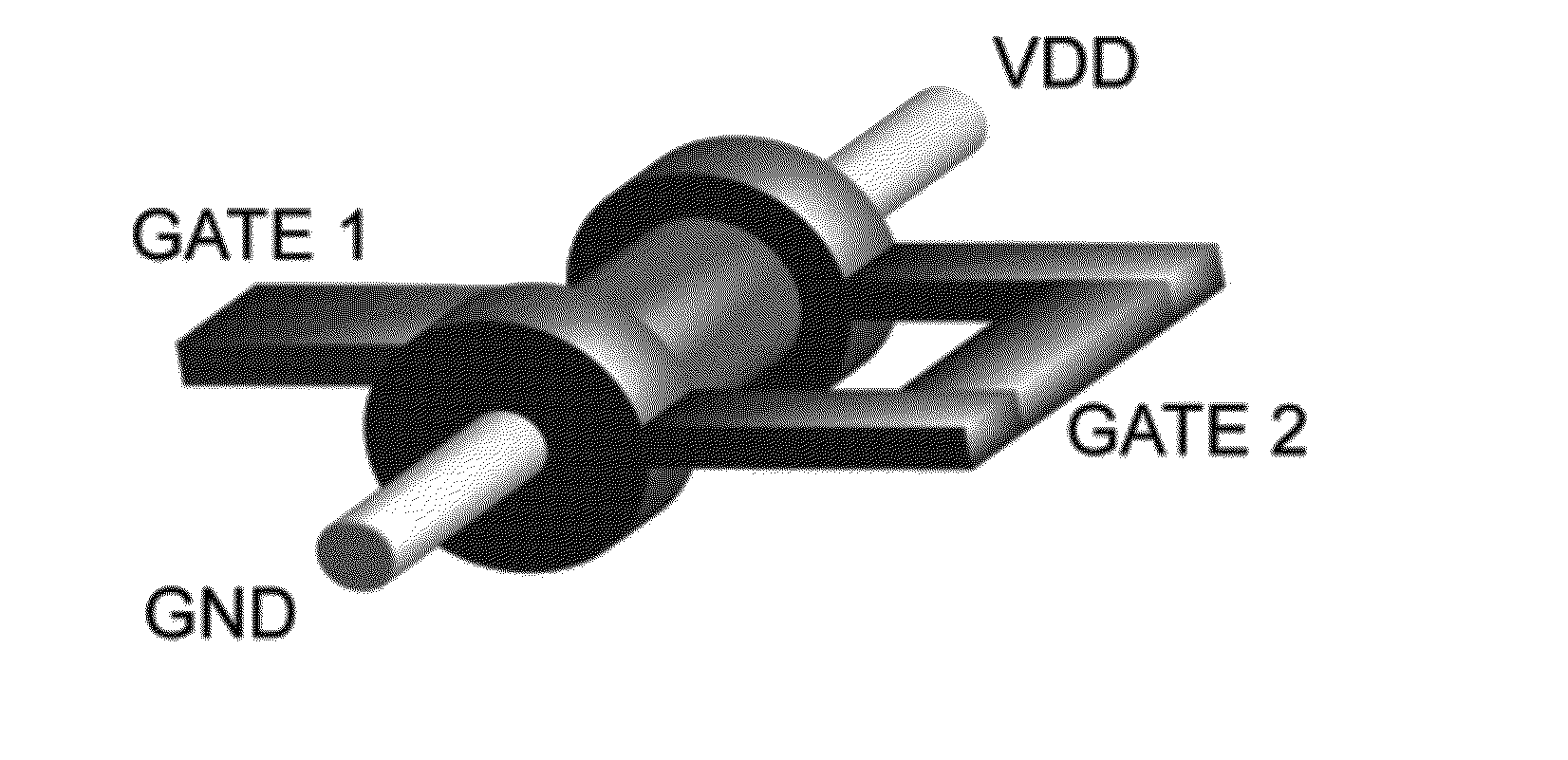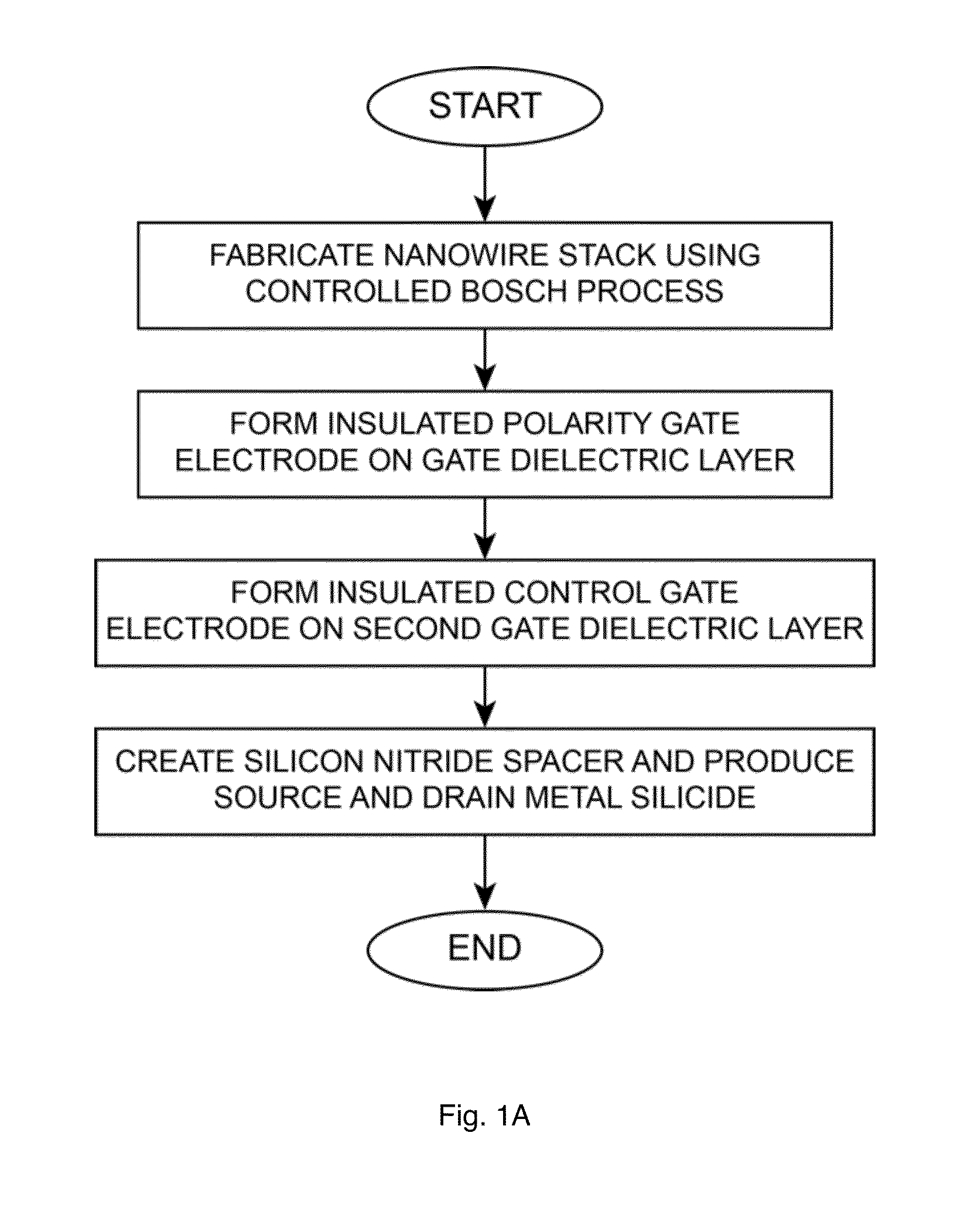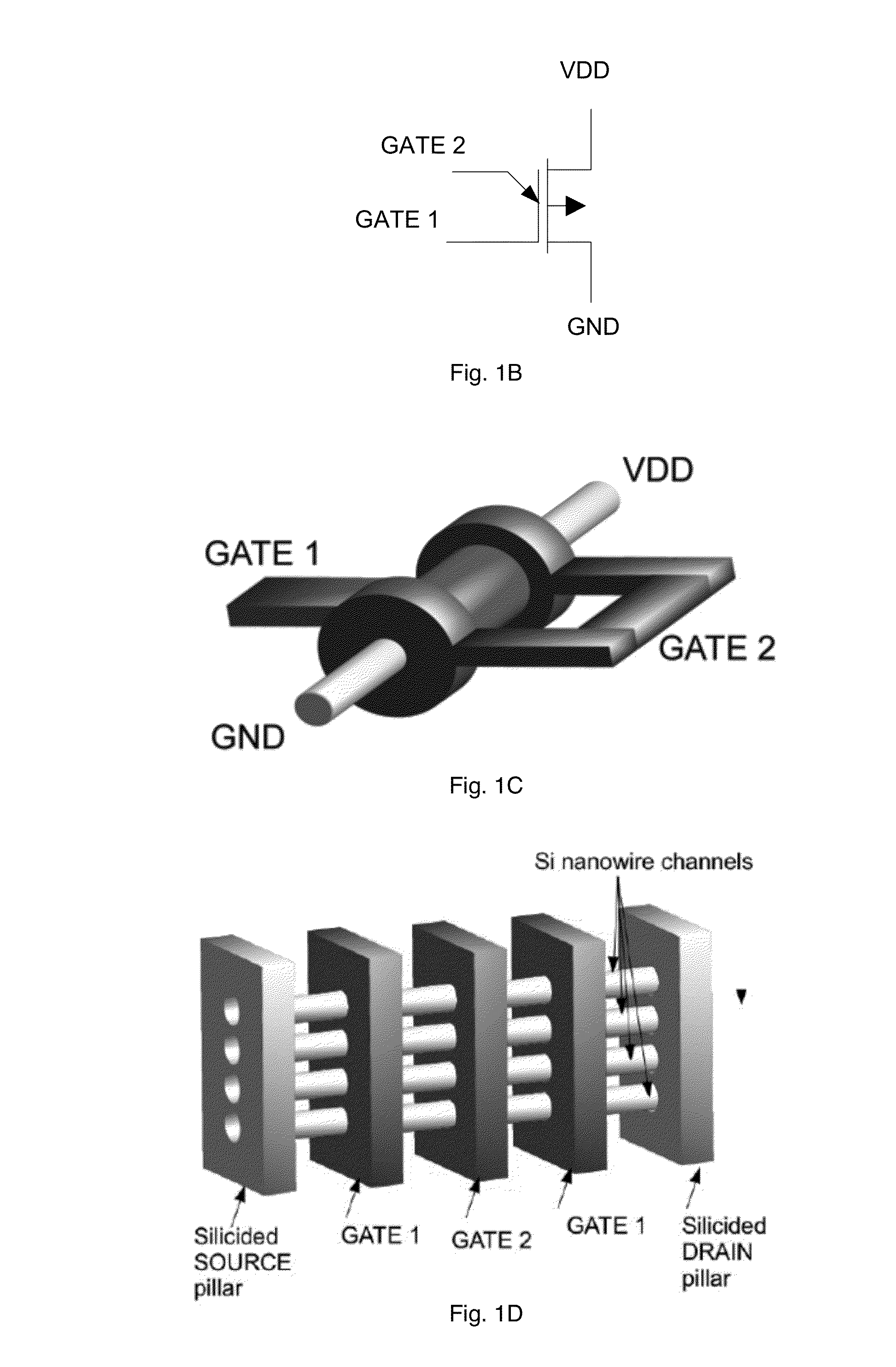Ambipolar silicon nanowire field effect transistor
a technology of field effect transistor and silicon nanowire, which is applied in the direction of nanotechnology, electrical equipment, semiconductor devices, etc., can solve the problems of precise alignment of the two gates at the sides, independent doping, and disadvantages of technology
- Summary
- Abstract
- Description
- Claims
- Application Information
AI Technical Summary
Benefits of technology
Problems solved by technology
Method used
Image
Examples
1st example
[0071]In a 1st example, the main steps of the device fabrication procedure are listed in FIG. 1A. Generally, the process includes creating a transistor channel, which can be composed of a vertical stack of a variable number of horizontal semiconducting nanowires, a parallel array of vertical stacks of horizontal nanowires, a fin-like structure (from which a FinFET transistor would be obtained) or a graphene ribbon. We will use the nanowire stack further on in this description as an example. FIG. 2B shows a cross section of the nanowire stack, with two pillar-like structures sustaining the nanowires, while FIG. 2A shows the top view of such stack.
[0072]After the channel structure is fabricated, a first gate insulator covering the channel section of the transistor is created. This gate insulator can be produced by direct oxidation of the transistor channel, or by deposition of various high-k dielectric materials.
[0073]A 1st gate electrode is deposited over the 1st gate insulator, and ...
2nd example
[0077]In a 2nd example, a single Si nanowire with Double Independent Gates is fabricated (see Top View of FIG. 3A). A low doping p-type (NA˜1015 atoms / cm2) SOI wafer with 1.5 μm device layer is spin coated. The photoresist is then patterned in 1.5 μm wide lines (see FIG. 3B) and used as mask for a next isotropic Si etching. A Si plasma etching recipe is tuned to form a triangular 75 nm wide Si nanowire lying on top of the buried oxide (BOX) layer (FIG. 3C). Then a 30 nm thick gate oxidation and a 150 nm polysilicon layer are deposited with a low-pressure chemical vapor deposition (LPCVD) method to form a main gate with 7.5 μm length (gate 1, FIG. 3D). 300 nm LPCVD low temperature oxide (LTO) is used to isolate the main gate. A second 500 nm polysilicon layer is then deposited. Then a thick photoresist is spun over the wafer and planarized using a chemical mechanical polishing procedure. This method leaves a protective polymer layer that is used to etch a second polysilicon gate self...
3rd example
[0078]In a 3rd example, vertical Si nanowires with Double Independent Gate All-Around are fabricated (see FIG. 4A). The Si nanowires are vertically etched in parallel on 10 SOI wafers after having patterned a SiO2 hard mask by lithography (FIG. 4B and FIG. 4C). The Si nanowire are then freestanding and anchored at the bottom where a Si layer is still left for subsequent processing (FIG. 4C). Then a SiO2 or a Si3N4 layer is deposited all-around by LPCVD method on 9 and 1 SOI wafer, respectively. Then SiO2 / Si3N4 spacers are formed by vertical plasma etching in a dry etching tool (FIG. 4D). At this stage, the Si nanowires are surrounded by a SiO2 or a Si3N4 dielectric, while the planar layer on top of the Buried Oxide and the top section of the Si nanowires reveal a non-passivated Si surface or with a native Si oxide thinner than 10 angstroms. Then another lithography defines the bottom layer that is etched in order to isolate the Si nanowires (FIG. 4E). Subsequently, a Ni metal laye...
PUM
 Login to View More
Login to View More Abstract
Description
Claims
Application Information
 Login to View More
Login to View More - R&D
- Intellectual Property
- Life Sciences
- Materials
- Tech Scout
- Unparalleled Data Quality
- Higher Quality Content
- 60% Fewer Hallucinations
Browse by: Latest US Patents, China's latest patents, Technical Efficacy Thesaurus, Application Domain, Technology Topic, Popular Technical Reports.
© 2025 PatSnap. All rights reserved.Legal|Privacy policy|Modern Slavery Act Transparency Statement|Sitemap|About US| Contact US: help@patsnap.com



